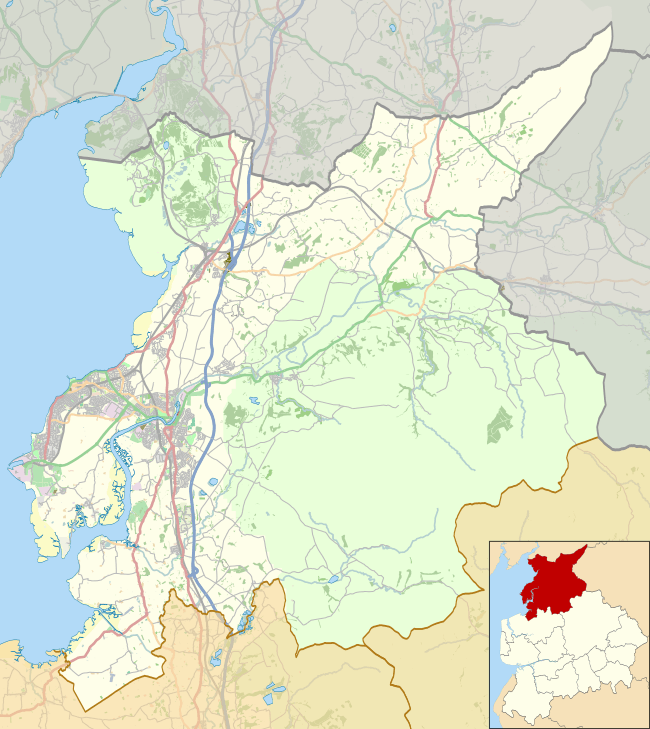Cockersand Abbey
| Cockersand Abbey | |
|---|---|
|
| |
| Location | Thurnham, Lancashire |
| Coordinates | 53°58′37″N 2°52′30″W / 53.977°N 2.875°WCoordinates: 53°58′37″N 2°52′30″W / 53.977°N 2.875°W |
| Official name: Cockersand Premonstratensian Abbey | |
| Designated | 13 January 1915 [1] |
| Reference no. | 1018919 |
Listed Building – Grade I | |
| Official name: The Chapter House, Cockersand Abbey | |
| Designated | 2 May 1968 [2] |
| Reference no. | 1362525 |
 Location of Cockersand Abbey in the City of Lancaster district | |
Cockersand Abbey is a former abbey near Cockerham in the City of Lancaster district of Lancashire, England. It was founded before 1184 as the Hospital of St Mary on the marsh belonging to Leicester Abbey. It was refounded by the Cambro-Norman magnate, Theobald Walter, 1st Baron Butler as a Premonstratensian priory. It was subsequently elevated to an abbey in 1192. It also continued as a hospital.[3]
The abbey was dissolved in 1539 and acquired by a John Kitchen. The site is now adjacent to a farm house and the only significant relic is the still intact, vaulted chapter house which was built in 1230 and used as a family mausoleum by the Daltons of Thurnham Hall during the 18th and 19th centuries.[4] There are some scrappy remains of the church adjacent. A tradition that the medieval choir stalls in the nearby Lancaster Priory originated from here has been discredited.
The chapter house is a Grade I listed building and Scheduled Ancient Monument. In 2007 English Heritage made an £80,000 grant to the owner to help preserve the building.[4] The chapter house is open to the public on special occasions such as Heritage Open Days.
Two Roman silver statuettes were discovered on Cockersand Moss near the abbey site in 1718, possibly indicating the presence of a Romano-British shrine nearby.[5]
List of dignitaries
|
|
Media galley
- Engraving of the chapter house at Cockersand Abbey
 The Lancashire Coastal Way passes the site of the abbey
The Lancashire Coastal Way passes the site of the abbey Surviving fragment of a wall
Surviving fragment of a wall
See also
- Grade I listed buildings in Lancashire
- Listed buildings in Thurnham, Lancashire
- List of monastic houses in Lancashire
- Abbeys and priories in England
References
Footnotes
- ↑ Historic England. "Cockersand Premonstratensian Abbey (1018919)". National Heritage List for England. Retrieved 28 January 2012.
- ↑ Historic England. "The Chapter House, Cockersand Abbey (1362525)". National Heritage List for England. Retrieved 28 January 2012.
- 1 2 Farrer & Brownbill (1908), pp. 154-9
- 1 2 "Ancient abbey is saved by grant". BBC News. 21 June 2007. Retrieved 21 November 2008.
- ↑ Cockersand Moss, Roman Britain.org.
Sources
- Anthony New. A Guide to the Abbeys of England And Wales, pp. 116–117. Constable.
- Farrer, William; Brownbill, J., eds. (1908), "A History of the County of Lancaster: Volume 2", Victoria County History, retrieved 27 January 2012
External links
| Wikimedia Commons has media related to Cockersand Abbey. |
